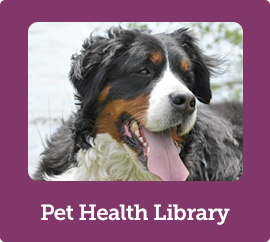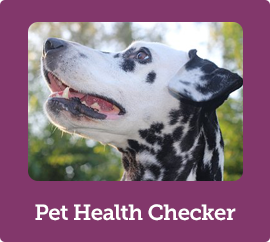
Dental disease is the most common diseases among both dogs and cats. By the age of three, an estimate of 80% of dogs and 70% of cats suffer from periodontal disease, according to the American Veterinary Dental Society. Periodontal disease means there is inflammation and infection of the tissues around the tooth. If food particles and bacteria are allowed to accumulate along the gum line, it forms plaque, which then combines with saliva and minerals and transforms into calculus. This causes gum irritation and leads to gingivitis, which is an inflammatory condition of the gums. Gingivitis is considered to be an early stage of periodontal disease. If left untreated for long periods, the calculus builds up under the gums and separates it from the teeth. Spaces form under the teeth, making an ideal location for bacteria to grow. Once this stage happens, the dog or cat has irreversible periodontal disease. Bone loss and tissue destruction usually follows. Periodontal disease affects both dogs and cats at any age, although it is more common in older pets.
Some of the signs of dental disease in pets are persistent bad breath, gums that bleed easily, pawing at the mouth, loose or missing teeth, inflamed gums, difficulty chewing or eating, and/or loss of appetite. Even if your dog or cat does not show any of these symptoms, we recommend that you have a veterinarian evaluate your pet’s dental health annually. He or she will inform you of any existing or potential problems in your pet’s mouth, and recommend professional teeth cleaning under general anesthesia, if necessary. Dental disease can also affect other major organs in the body, including infections in the kidneys, liver, lungs and heart if the bacteria from the mouth get into the bloodstream. If these problems aren’t diagnosed and treated quickly enough, they can result in death.
The key to prevention is to brush your dog or cats teeth daily, feeding a dental diet and providing dental chews, treats and chew toys to eliminate bacteria and any food debris. Dental diets are designed to reduce the amount of plaque and tartar that accumulates on the teeth. Dental diets and treats are larger in size, with an airy, fibrous texture that breaks up easily so that the edges of the kibble scrub at the surfaces of the teeth as they chew.
Daily teeth brushing for pets are ideal, but if it not possible then committing to a few times a week is better than not doing it at all. Brushing your dog or cats teeth should be an enjoyable time for both of you. Take things slow at the beginning, keeping sessions short and positive until both are comfortable. With lots of praise and attention your dog and cat will look forward to your brushing sessions in no time. When brushing your pets’ teeth, always use toothpaste made specifically for pets; many flavours are available in pet stores such as poultry, peanut or fish. There are many videos available on how to brush your dog’s teeth and how to brush your cat’s teeth.




